All About Turbidity of Water | What Is Turbidity of Water | Procedure of Turbidity of Water Test

Table of Contents
What Is Turbidity of Water?

Turbidity of water is a property of water or liquid by which we can measure the relative clarity of a liquid. The turbidity of water is an optical characteristic of liquid and is a measurement of light reflected through the materials, which are present in the water.
In simple words we can say that turbidity is a determining technique of haziness or cloudiness presence in a water sample.
By this technique we can determine the difference between muddy river water vs tap water.
When we examine the waters we can see the muddy water is brown color and presence high turbidity, on the other hand in tap water is colorless and it has very low turbidity.
Turbidity of Water Test
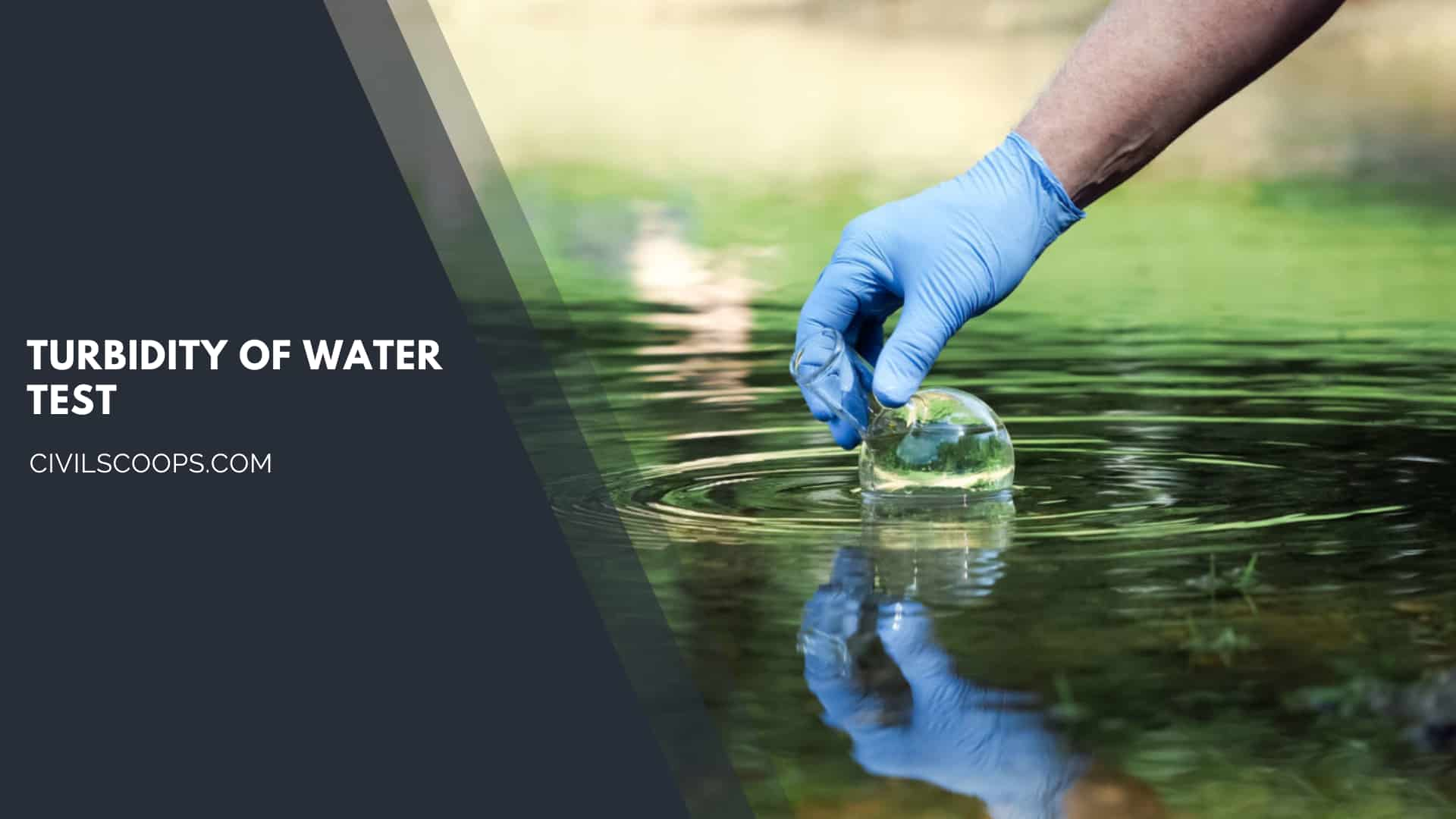
When water contains material of suspense inside it, then it is called turbide water. The turbid is generally made of algae or other organic material, which is measured when the visible materials are suspended in water.
The turbide is a part of clay or silt. The character and amount of turbidity depend on two factors, one is velocity of water and another is the type of soil on which the water flows. The procedure of turbidity of water test is described below –
Apparatus-
- For the turbidity of water test many types of apparatus are need that are, nephelo turbidity meter, beakers, glass tubes etc.
Also Read: All About Drywall Water Damage Repair
Useful Article for You
- What Is a Highway Flyover
- What Is Grouting
- What Is a Pile Cap
- What Is a Bond Beam in Masonry
- What Is Sapwood
- What Is Crane
- What Is a Gable
- What Is Superelevation
- What Is Kerb
- What Is the Purpose of Washers
- What Is the Size of a Brick in Inches
- What Is Reinforced Masonry
- What Is Workability
- What Is Bond Breaker
- What Is Plasticizer in Concrete
- What Is Luminous Flux Vs Lumens
- What Is Caisson
- What Is an Undercoat
- What Is a Benchmark Surveying
- What Is Bracing in Construction
- What Is a Beam in Construction
- What Is the Standard Door Frame Size
- What Is a Spandrel Beam
- What Is a Fire Escape
- What Is a Weep Hole
- What Is Tie Beam
- What Is Fine Aggregate
- What Is Pony Wall
- What Is Flag Stone
- What Is Development Length
- What Is Cement Plaster
- What Is a Pitched Roof
Procedure of Turbidity of Water Test
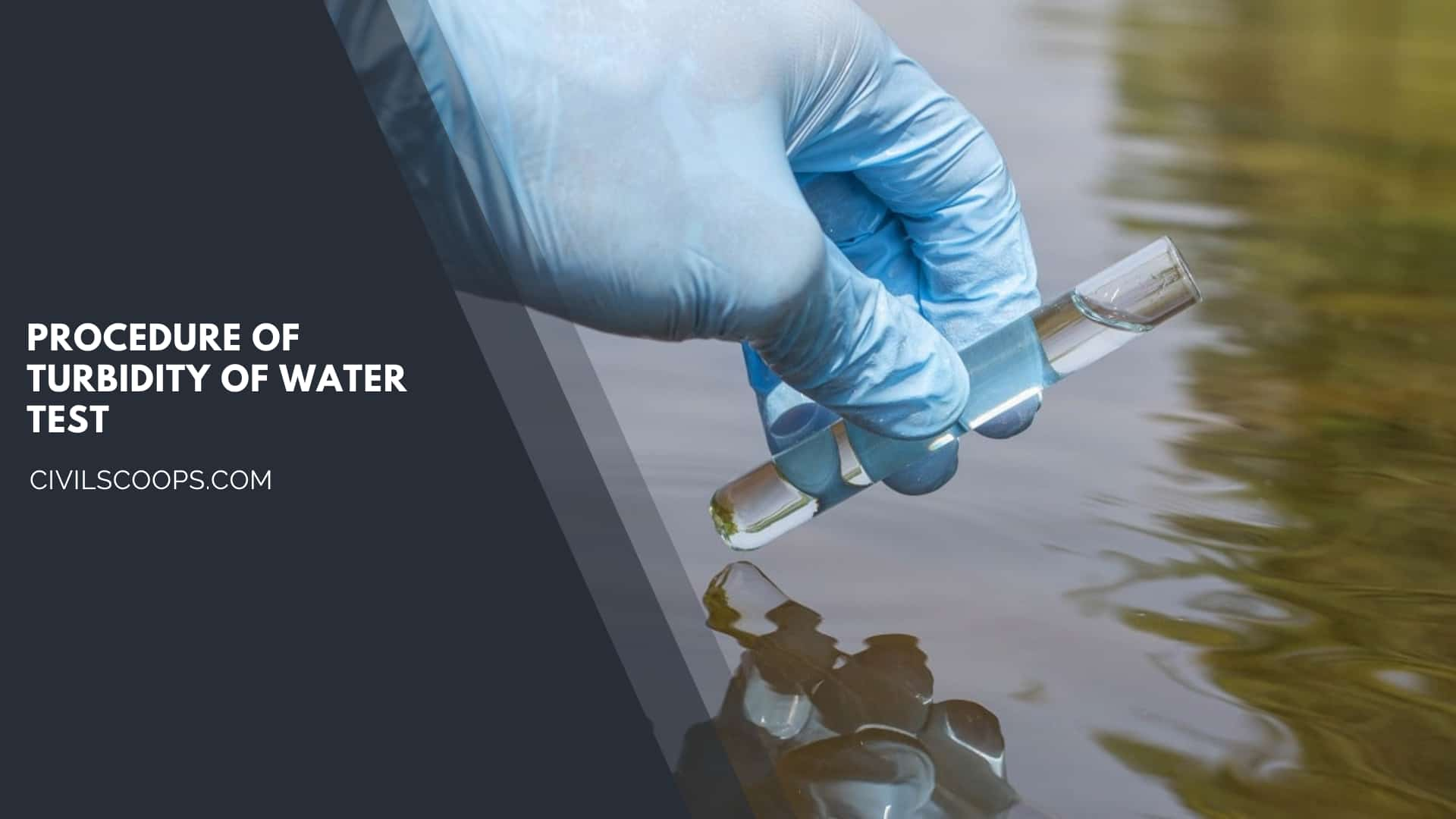
Here, we are going for a water turbidity test. We have divided this test into two parts as follows and let us know in detail.
1. Calibration of Nephelometer
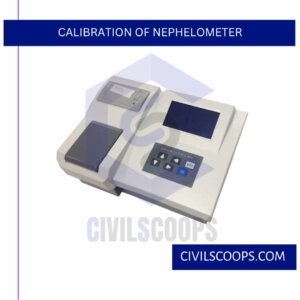
- At first, we have to select the correct range of NTU on the nephelometer.
- After that, we have to fill distilled water on a test tube and set the nephelometer at a zero reading by a knob which is provided for zero setting.
- Next 40 NTU of standard solution is poured in the test tube and set the nephelometer reading at 40 NTU by using a calibration
knob.
2. Determination of Turbidity of Sample Water
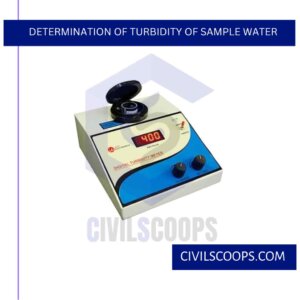
- Before analysis it should keep in mind the sample temperature must come at room temperature.
- After this, we have to mix the sample thoroughly to the disperse solid and wait until the bubbles are out of the mixture.
- After removing the bubbles from the mixture we have to pour the water into the test tube.
- If the turbidity is more than 100 NTU, use a cell rise to get the turbidity duration factor.
- After doing the above actions we can see the turbine value on the turbidity meter and note down the value.
Application of Turbidity of Water Test Data
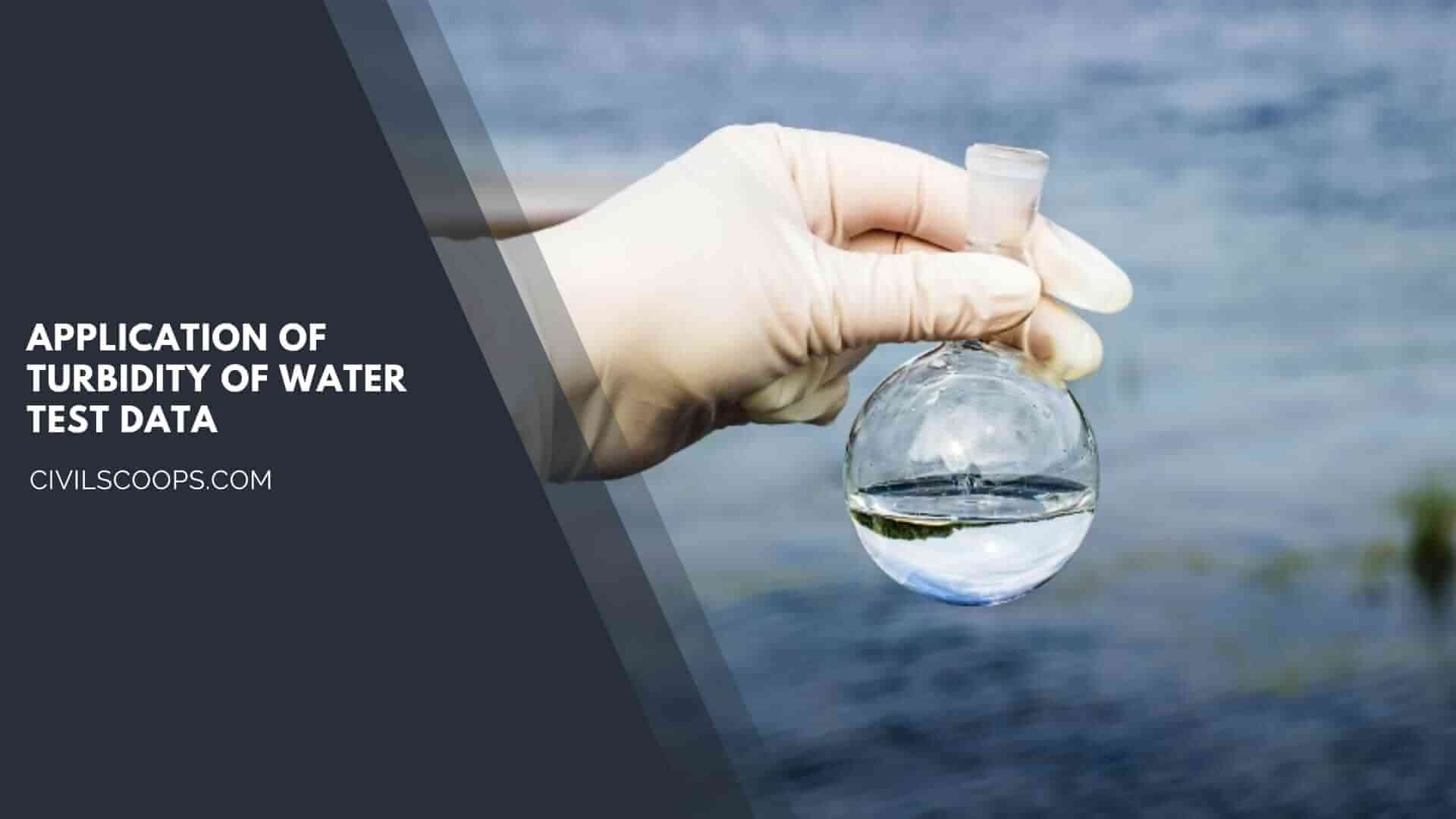
There are many types of applications of turbidity of water test data, which are below
- The turbidity test is one of the most important tests of water for a water supply because by this test we can know which treatment and how is best for those water.
- By estimating the turbidity of filtered water we can find if there is any fault in the filter.
- By measurement of wastewater turbidity, we can know how the quantity of suspended solid water should be removed from the water.
- From the turbidity information, we can know how more doses and chemicals should me added for filter the supply water.
[su_box title=”FAQ” style=”default” box_color=”#333333″ title_color=”#FFFFFF” radius=”3″ class=”” id=””]
What Is Turbidity of Water?
Turbidity is the measure of relative clarity of a liquid. It is an optical characteristic of water and is a measurement of the amount of light that is scattered by material in the water when a light is shined through the water sample. The higher the intensity of scattered light, the higher the turbidity.
What Causes Turbidity in Water?
Material that causes water to be turbid include clay, silt, very tiny inorganic and organic matter, algae, dissolved colored organic compounds, and plankton and other microscopic organisms. Turbidity makes water cloudy or opaque.
What Is the Acceptable Level of Turbidity in Drinking Water?
1 NTU
The WHO (World Health Organization), establishes that the turbidity of drinking water shouldn’t be more than 5 NTU, and should ideally be below 1 NTU.
What Is a Turbidity Meter?
Turbidity Meters technically known as nephelometers – emit light and measure the amount scattered by particles in the sample. The units depend on the wavelength of the light and the angle of the detector(s)13; the most common units are Nephelometric Turbidity Units (NTU) or Formazin Nephelometric Units (FNU).
What Does Turbidity Measure in Water?
Turbidity measures the cloudiness or haziness of a fluid caused by large numbers of individual particles that are generally invisible to the naked eye. In the context of water, turbidity specifically refers to the amount of suspended particles, such as sediment, silt, clay, microorganisms, and other substances, that are present in the water.
What Are the Causes of Turbidity in Water?
The higher the intensity of scattered light, the higher the turbidity. Material that causes water to be turbid include clay, silt, very tiny inorganic and organic matter, algae, dissolved colored organic compounds, and plankton and other microscopic organisms. Turbidity makes water cloudy or opaque.
Turbidity Test Procedure
The simplest and lowest cost way to measure the turbidity of a sample is a turbidity tube. This is a tube with a black cross at the bottom. The user simply keeps pouring water into the tube until they can no longer make out the black cross at which point you can read off the scale on the outside of the tube in NTU.
Turbidity Meter
Turbidity meters are used to quickly measure the turbidity (or cloudiness) of water, caused by suspended solid particles. Understanding how turbidity meters work can help in achieving more accurate results and ensuring the samples and meter are handled correctly.
What Is Turbidity in Drinking Water?
Turbidity in drinking water refers to the cloudiness or haziness of the water caused by the presence of suspended particles, such as sediment, silt, clay, microorganisms, and other substances. It is a key parameter used to assess the quality of water intended for human consumption.
How to Measure Turbidity of Water?
The best way to measure turbidity in a wide variety of samples is with a nephelometer, also known as a turbidity meter. Turbidity meters utilize a light and photo detector to measure light scatter, and read out in units of turbidity, such as nephelometric turbidity units (NTU) or formazin turbidity units (FTU).
What Is a Good Turbidity Level in Water?
Turbidity of drinking water can range from 0.5-1.0 NTU, but should never exceed 1.0 NTU. 3. Turbidity that exceeds 5.0 NTU can be easily detected.
Ntu Turbidity
Turbidity, a measure of the cloudiness of a fluid, is recorded in Nephelometric Turbidity Units (NTUs). Five NTUs are just noticeable by the eye, while 50–100 NTUs are often used as an indication of brine clarity. More stringent NTU values are used for some completion and intervention fluids.
What Is Turbidity in Water Quality?
Turbidity in water quality refers to the optical property that causes light to be scattered and absorbed rather than transmitted in straight lines through the water. It is a measure of the cloudiness or haziness of a liquid, which is primarily caused by the presence of suspended particles.
Turbidity and Nephelometry
In nephelometry the intensity of the scattered light is measured, while, in turbidimetry, the intensity of light transmitted through the sample is measured. Nephelometric and turbidimetric measurements are used in the determination of suspended material in natural waters and in processing streams.
What Is High Turbidity in Water?
Turbidity is a measurement of how cloudy the water is in a lake or river. Anything that makes water cloudy will increase turbidity. High turbidity can be caused by silt, mud, algae, plant pieces, melting glaciers, sawdust, wood ashes or chemicals in the water.
Nephelometric Turbidity Units
NTU stands for Nephelometric Turbidity unit, i.e. the unit used to measure the turbidity of a fluid or the presence of suspended particles in water. The higher the concentration of suspended solids in the water is, the dirtier it looks and the higher the turbidity is.
Turbidity Examples
For example, consider the differences in water from a tap and water from a muddy river. The water from the tap is colourless and clear, with a very low turbidity. On the other hand, a muddy river is brown and opaque and therefore has a high turbidity.
What Is the Normal Turbidity of Water?
According to the World Health Organization, the turbidity of drinking water should never exceed 5 NTU.
What Does High Turbidity of Water Indicate?
High turbidity of water indicates an elevated level of suspended particles, which can affect water clarity, pose potential health risks, interfere with disinfection, and impact aquatic life.
What Does Turbidity Tell Us About Water Quality?
The suspended solids contributing to turbidity can affect water chemistry and microbiology. The particles can adsorb (take up on their surfaces) pollutants, including nutrients, metals, and organic compounds. If the particles settle on the bottom of the waterbody, then the pollutants settle with them.
What Is a Good Turbidity Level?
A good turbidity level for drinking water typically falls below 1 nephelometric turbidity unit (NTU). However, acceptable levels can vary based on local regulations and the specific purpose of the water. For environmental purposes, lower turbidity levels are generally desired to support healthy aquatic ecosystems.
What Is the Normal Range for Turbidity in Water?
The normal range for turbidity in water depends on its intended use and local regulations. However, for most drinking water supplies, the typical range falls between 0 and 5 nephelometric turbidity units (NTU). Keep in mind that specific standards and acceptable levels may vary by region and regulatory agency. For environmental purposes, particularly in sensitive ecosystems, lower turbidity levels are often desired to support healthy aquatic life. Always consult local water quality guidelines for precise turbidity standards in your area.
[/su_box]
[su_note note_color=”#F2F2F2 ” text_color=”#333333″ radius=”3″ class=”” id=””]
Like this post? Share it with your friends!
Suggested Read –
- What Is Moment Frame
- What Is Concrete Forms
- What Is a Flight of Stairs
- New Civil Engineering Technology 2023
- Understanding Oblique Drawing: Techniques, Examples, and Applications
[/su_note]
Originally posted 2023-10-03 10:42:13.
